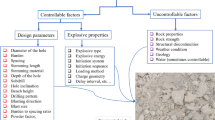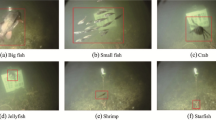Abstract
Pipe burst events pose threats to the safety and stability of water supply networks. Deep learning models have been studied for burst location analysis in recent years, but the applicability of the methods needs further research to cope with different size and hydraulic status of pipe networks. A novel framework of burst area identification based on an improved DenseNet model is proposed in this paper. First, according to regional characteristics of hydraulic state caused by pipe burst events, pipe network is divided into monitoring areas. Then, a new model by fully linear DenseNet with attention mechanism (FA-DenseNet) is developed for effective feature extraction and burst area identification. Thirdly, Bayesian optimization algorithm is introduced to automatically optimize the hyperparameters of the deep learning model for better accuracy. The proposed framework was tested in a real-life example network with synthetic burst monitoring data, and the accuracy of burst area identification reaches 0.918. The model is also compared with a traditional BP neural network and a DenseNet model without attention mechanism, and the results show that FA-DenseNet is more robust with the respects of different pipe burst conditions, monitoring noise and the number of pressure monitoring points. The proposed framework provides water companies an applicable and effective method of pipe burst identification and inspection.









Similar content being viewed by others
Code Availability
Models has been published on github: https://github.com/jing-2020/FA-DenseNet
References
Ah A, Mbck B (2019) An adaptive multivariate ewma chart. Comput Ind Eng 127:549–557
Azevedo B, Saurin TA (2018) Losses in water distribution systems: A complexity theory perspective. Water Resour Manag 32(9):1–18
Bilmes JA (1998) A gentle tutorial of the EM algorithm and its application to parameter estimation for Gaussian mixture and hidden Markov models. International Computer Science Institute 4(510):126
Chan TK, Chin CS, Zhong X (2018) Review of current technologies and proposed intelligent methodologies for water distributed network leakage detection. IEEE Access (99):1–1
Cheng W, Xu G, Fang H, Zhao D (2019) Study on pipe burst detection frame based on water distribution model and monitoring system. Water 11(7):1363
Dan J, Rui W, Xu C, Yu Z (2016) QIM: Quantifying hyperparameter importance for deep learning. In: IFIP International Conference on Network and Parallel Computing 180–188
Davis J, Goadrich M (2006) The relationship between Precision-Recall and ROC curves. In: Proceedings of the 23rd international conference on Machine learning 233–240
Doan T N, Do T N, Poulet F (2013) Large scale visual classification with many classes. In: International Workshop on Machine Learning and Data Mining in Pattern Recognition 629–643
Hu D (2019) An introductory survey on attention mechanisms in NLP problems. In: Proceedings of SAI Intelligent Systems Conference 432–448
Huang G, Liu Z, Van Der Maaten L (2017) Densely connected convolutional networks. In: Proceedings of the IEEE conference on computer vision and pattern recognition 4700–4708
Kang J, Park YJ, Lee J, Wang SH, Eom DS (2017) Novel leakage detection by ensemble cnn-svm and graph-based localization in water distribution systems. IEEE Trans Ind Elect (99):1–1
Lambert A (2001) What do we know about pressure: Leakage relationships in distribution systems? In: Proc. IWA system approach to leakage control and water distribution systems management
Lecun Y, Bengio Y, Hinton G (2015) Deep learning. Nature 521(7553):436
Maugis C, Martin-Magniette C (2010) Variable selection for clustering with gaussian mixture models. Biometrics 65(3):701–709
Moors J, Scholten L, van der Hoek JP, den Besten J (2018) Automated leak localization performance without detailed demand distribution data. Urban Water J 15(2):116–123
Mounce Steve R, Andrew J, Alastair S, Khan Widdop, Peter D (2002) A neural network approach to burst detection. Water Sci Technol 45(4–5):237–246
Nam KJ, Ifaei P, Heo S, Rhee G, Lee S, Yoo CK (2019) An efficient burst detection and isolation monitoring system for water distribution networks using multivariate statistical techniques. Sustainability 11(10): 2970
Ping He, Tao Tao, Kunlun Xin, Shuping Li, Hexiang Yan (2016) Modelling water distribution systems with deficient pressure: An improved iterative methodology. Water Resour Manag 30(2):593–606
Reynolds DA (2009) Gaussian mixture models. Encyclopedia of Biometrics 741:659–663
Romano M, Kapelan Z, Savic DA (2013) Geostatistical techniques for approximate location of pipe burst events in water distribution systems. J Hydroinformatics 15(3):634–651
Shahriari B, Swersky K, Wang Z, Adams RP, Freitas ND (2015) Taking the human out of the loop: A review of bayesian optimization. Proceedings of the IEEE 104(1):148–175
Starczewska D, Collins R, Boxall J (2014) Transient behavior in complex distribution network: A case study. Procedia Engineering 70:1582–1591
Tim Kittel, Jobst Heitzig, Kevin Webster, Jürgen K (2017) Timing of transients: quantifying reaching times and transient behavior in complex systems. New J Phys 19(8):83005–83005
Wagner JM, Shamir U, Marks DH (1988) Water distribution reliability: Simulation methods. J Water Res Plan Manag 114(3):276–294
Wu Y, Liu S, Wu X, Liu Y, Guan Y (2016) Burst detection in district metering areas using a data driven clustering algorithm. Water Res 100:28–37
Yuille A L, Liu C (2021) Deep nets: What have they ever done for vision? Int J Comput Vis 129(3):781–802
Zhou X, Tang Z, Xu W, Meng F, Fu G (2019) Deep learning identifies accurate burst locations in water distribution networks. Water Res 166:115058
Acknowledgements
This work was supported by the National Key Research and Development Program of China (Grant No. 2016YFC0802400).
Funding
Funded by the National Key Research and Development Program of China (Grant No. 2016YFC0802400).
Author information
Authors and Affiliations
Contributions
Jing Cheng: Building the framework and Writing-original draft. Sen Peng: Guiding the construction of the framework, revising and reviewing the manuscript. Rui Cheng: Building hydraulic mode. XinQi Wu: Generating simulation data. Xu Fang: Checking data.
Corresponding author
Ethics declarations
Ethics Approval
Not applicable.
Consent to Participate
Not applicable.
Consent for Publication
Not applicable.
Conflicts of Interest
No conflict of interest.
Additional information
Publisher's Note
Springer Nature remains neutral with regard to jurisdictional claims in published maps and institutional affiliations.
Rights and permissions
Springer Nature or its licensor holds exclusive rights to this article under a publishing agreement with the author(s) or other rightsholder(s); author self-archiving of the accepted manuscript version of this article is solely governed by the terms of such publishing agreement and applicable law.
About this article
Cite this article
Cheng, J., Peng, S., Cheng, R. et al. Burst Area Identification of Water Supply Network by Improved DenseNet Algorithm with Attention Mechanism. Water Resour Manage 36, 5425–5442 (2022). https://doi.org/10.1007/s11269-022-03316-9
Received:
Accepted:
Published:
Issue Date:
DOI: https://doi.org/10.1007/s11269-022-03316-9




